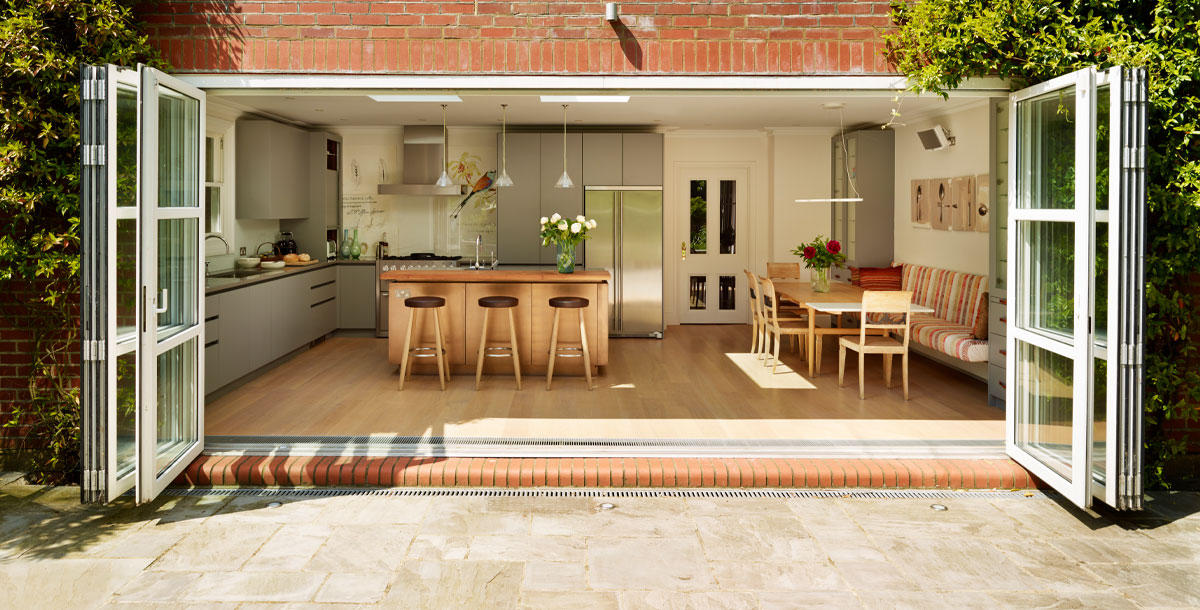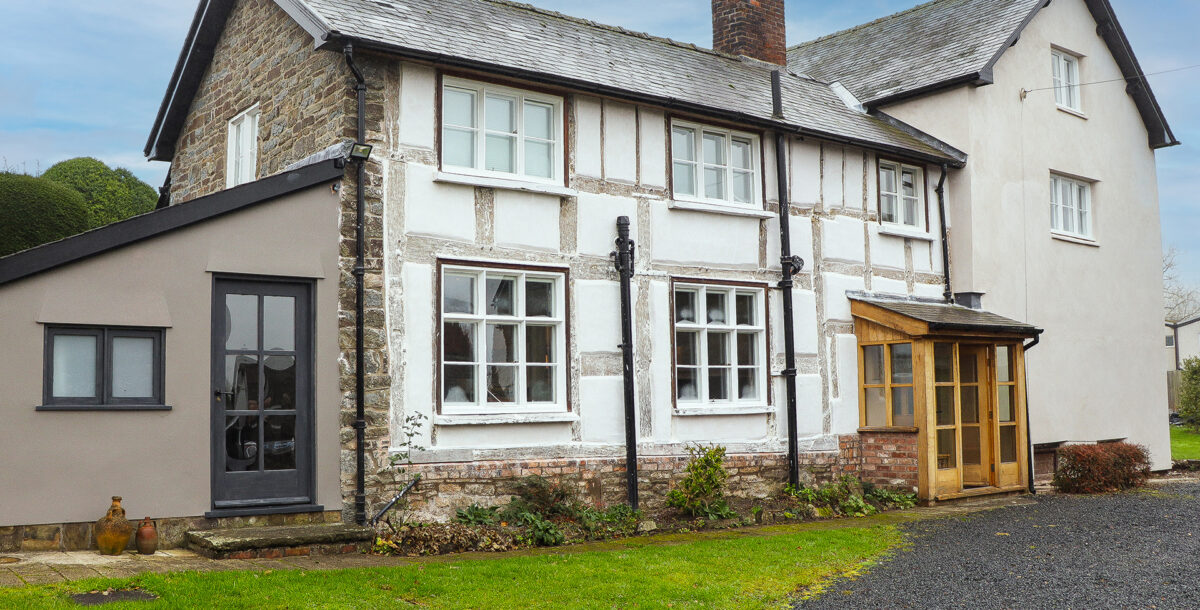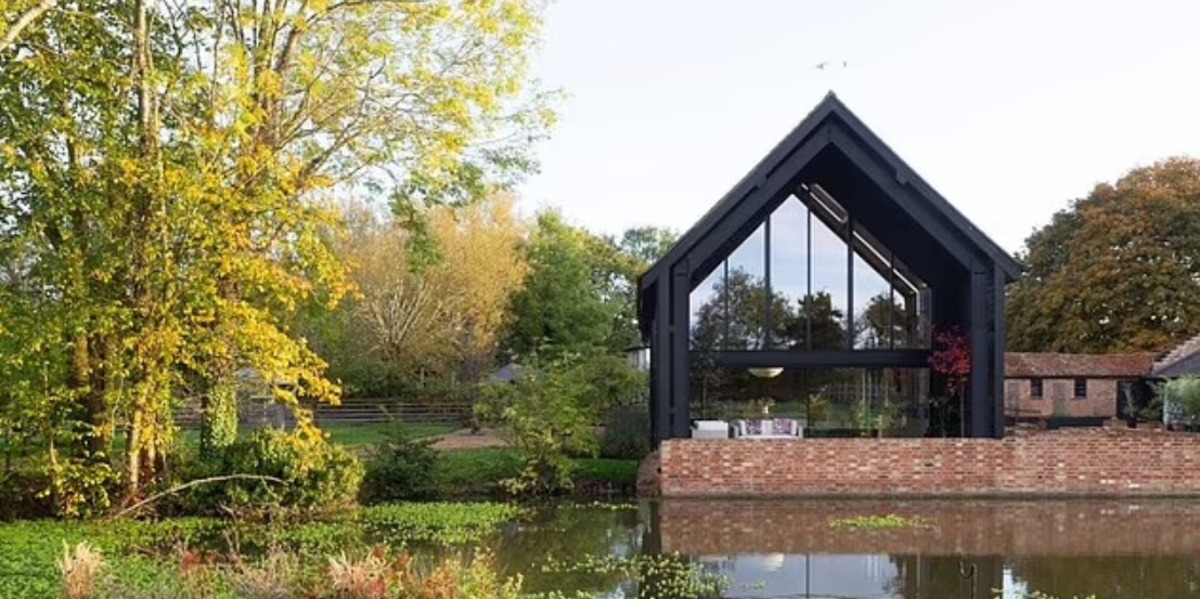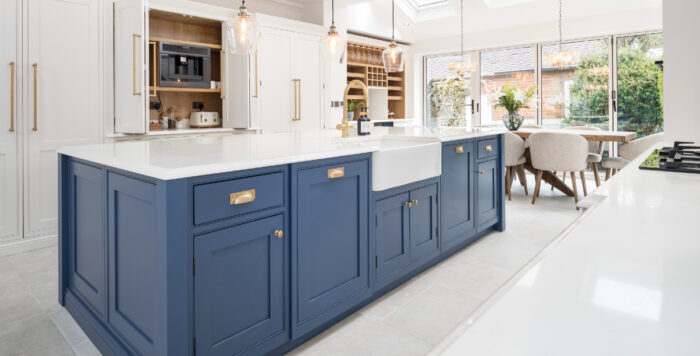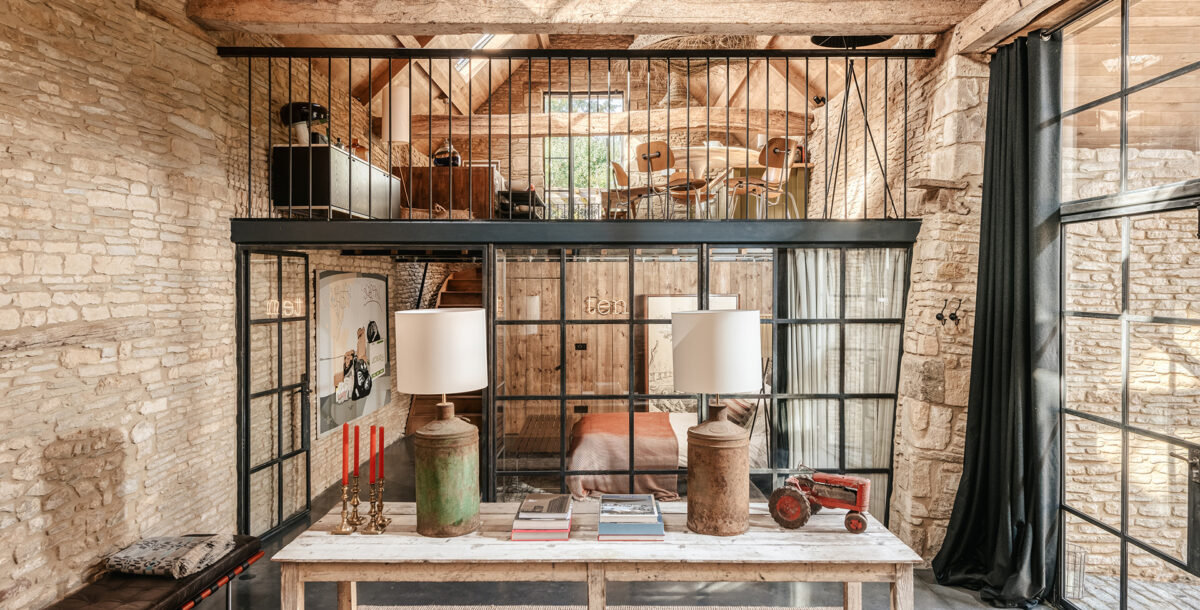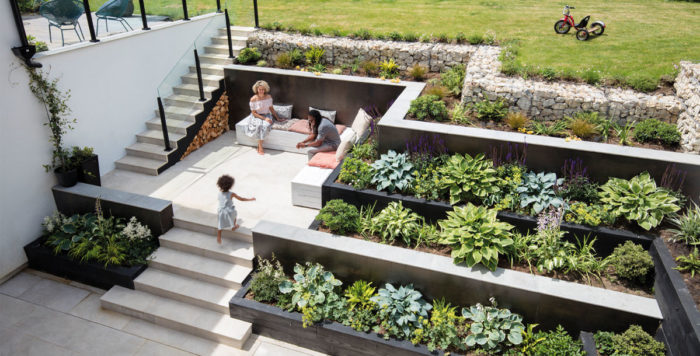How to plan a kitchen extension
From hiring an architect to the finishing touches, this guide has everything covered
An extension offers you the opportunity to create a versatile, open-plan space that can be adapted to suit changing needs. However, with a fluid variety of functions, planning a kitchen extension holistically is key. Consider the kitchen design and how you will extend at the same time to ensure that you’ll have enough space, a good working layout and that essential services are in the right place. This way, you won’t have to make compromises on the layout of your building further down the line.
Planning a kitchen extension: step by step
Deciding what you want your extension to include is the first step – as well as a kitchen and somewhere to eat, consider if you’d also like a living area, a desk space, extra storage or direct access to the garden.
Next, think about how you want it to look inside and what type of addition would suit your property: for example, a single- or double-storey extension, a lean-to or side return, or a rear addition. Take clippings from magazines, look online and see what has been built in your local area for inspiration.
All these factors will affect your budget, timeframe (check if you need planning permission or if it will fall under permitted development – more on that below) and level of disruption. For example, lean-tos and side returns usually require less foundation work and garden space, but may need more internal structural changes, such as removing walls, disguising pillars or levelling floors and ceilings.
Once you have a rough idea of the size and type of extension, you’ll need to work out a schedule. Remember to factor in time to submit planning applications and party wall agreements with neighbours if required and find an architect and builder (the best companies are often busy), as well as time for the actual construction, which often takes between three and six months.
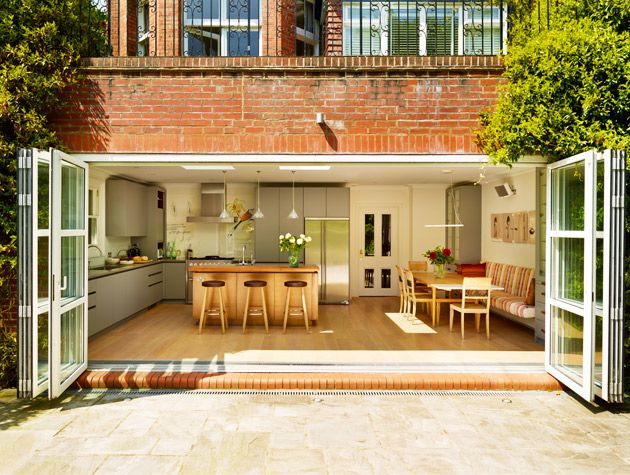
Photo: Roundhouse
Will you need planning permission?
When planning a kitchen extension, check whether or not you need planning permission. Some kitchen extensions can be carried out under permitted development (PD) rules, which means that applying for planning permission is not necessary. There are plenty of kitchen extension ideas that work well within these limitations. To see the legislation in full, visit the Planning Portal.
‘You can apply for PD if your extension, including previous extensions or other buildings such as sheds, does not exceed 50% of the total area of land around the original house,’ says Ana Martins of architect Martins Camisuli.
You might need planning permission for your kitchen extension, and further restrictions will apply if your property is in a conservation area or is listed. ‘We believe in submitting an application for what you actually want, within reason, and seeing how the planners react,’ says Ana.
‘Planners are always open to discussions and are usually reasonable, unless your proposal is way beyond what is acceptable. Approach your neighbours to see what they might object to. They have a lot of power; an objection could destroy your plans.’
Bear in mind that party wall agreements may be required if work affects the boundary with neighbouring properties. All projects are subject to building regulations consent.
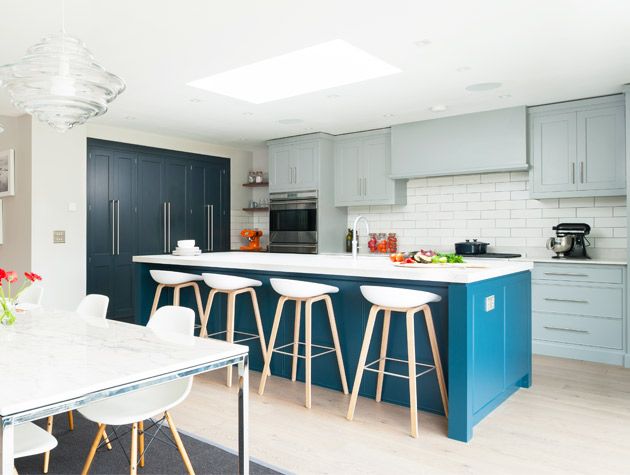
Photo: Edmondson Interiors
Should you hire an architect?
Hiring an architect is a good idea, although not essential for straightforward schemes, where a structural engineer or builder may suffice. An architect will ensure that your plans are structurally sound, take care of plumbing and electrics – which need to be considered at the planning stage – and recommend reliable trades or manage contractors.
‘If you want to employ an architect, RIBA’s website is a good place to start,’ advises Paul Schofield, commercial design manager at Apropos. ‘Asking neighbours and friends is also a great way to find an architect.’
Choose your kitchen company at the planning stage, so it can work with your architect or builder and advise on lighting, extraction and zoning the new space. The layout of your kitchen comes down to personal choice, but you may want to position cabinetry so you can enjoy garden views, socialise with the rest of the room while cooking or supervise children.
Set a budget
Working out your budget is an essential step when planning a kitchen extension. The extent of the building work and quality of finish you want will affect the price. Costs vary by project, but the average spend is around £30,000.
A single-storey addition is a lower-cost option, but if your budget and local planning policy allows, go for two-storeys. Doubling the height won’t double the cost, as the foundations and roof will be factored into the overall cost of the project, whether on one level or two. In fact, a two-storey extension may be more economical in terms of price per sqm.
Costs for basement conversions will rise if the space needs tanking, a drainage pump or underpinning. Reworking an existing extension may not be cheaper than starting from scratch, so seek expert advice.
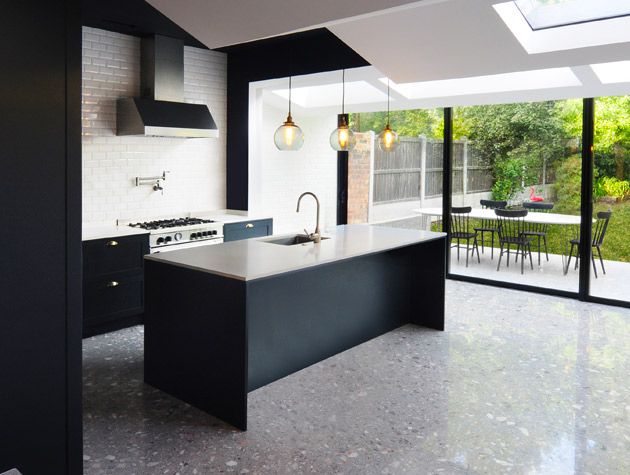
Photo: Bureau de Change
Consider your kitchen design
While it’s best to plan the building before the kitchen, it’s a good idea to research suppliers and choose the company you want to use at the start of your project. Not only will it be able to suggest a programme of works, costs and concepts for the extension, but designing the kitchen sooner will minimise the chance of later alterations, such as moving doors or windows.
‘The layout is a major factor in an open-plan space; you need to think carefully about the aesthetics because your kitchen will always be on show,’ explains Graeme Smith, senior designer at 1909.
‘There’s a fine balance between a space that doesn’t look lived in and one in which there is clutter strewn across the worktops. When planning storage, think beyond the obvious cabinets and consider where to stash everyday things such as electronic devices, homework books and children’s games.’
You’ll also need to make sure that messy areas, such as sinks, aren’t directly in the line of sight, while planning in central features such as a seating area or wine cabinet.
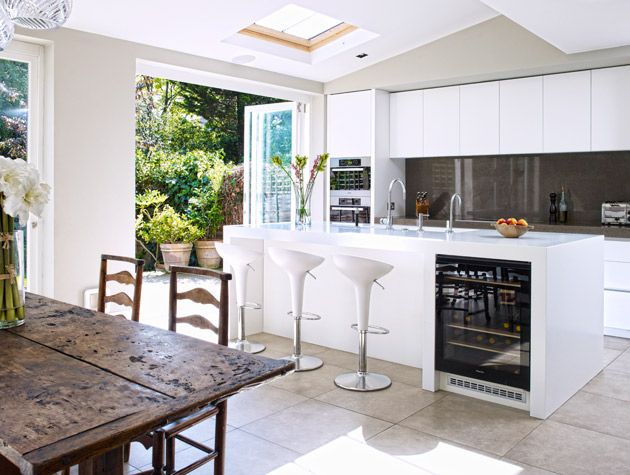
Photo: Kitchens by Holloways
Think about zoning the space
Every layout will be different depending on the space, but there are a few standard rules for zoning the room. Start by deciding where you want to eat and the view you’d like to have while cooking; it’s also useful to track the passage of the sun overhead. ‘It’s crucial that in a large room, functionality is not lost,’ advises Richard Davonport, MD at Davonport.
‘Imagine how you want to use the space and zone it so that each part has a clear function, such as distinct cooking, eating, cleaning and living areas. How they’re arranged is down to personal preference, but there should be a natural flow between the zones. For example, it’s nice for a seating or breakfast bar area to open on to the garden, so position it near the windows or doors leading outside.’
Larger rooms may need some design tricks to help define the zones. Peninsulas, different floor types and freestanding open shelves are useful for creating this visual division.
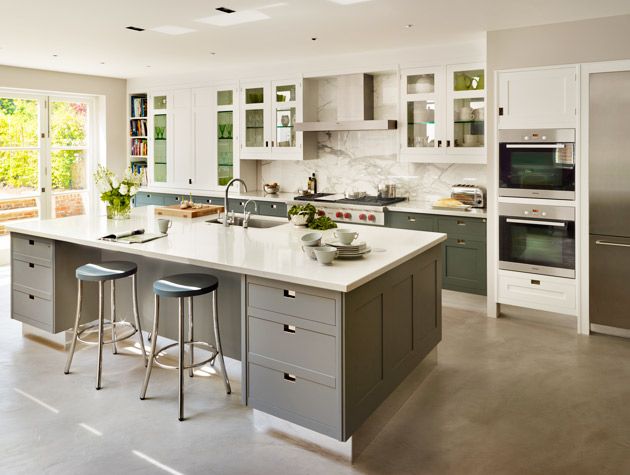
Photo: Smallbone of Devizes
Maximise light
An extension will displace some of the daylight that would normally reach your original rooms, so consider supplementing it. ‘A bank of roof lights or a roof lantern is a good option,’ says Richard Witcher, partner at Witcher Crawford architects and designers. ‘Positioning the light sources nearer the back of the extension will help the sun flow into now-darker areas of the original room.’
Adding mood lighting to your kitchen, such as under-counter spots, in addition to task lighting, will ensure adequate illumination in the evenings. Full-height glass doors are a common feature of extensions, but remember that they’ll reduce the amount of wall space available for storage. Tall cupboards and islands have a large capacity in relation to their footprint, but also consider a larder and adjacent utility room to ease the storage demands on the kitchen.
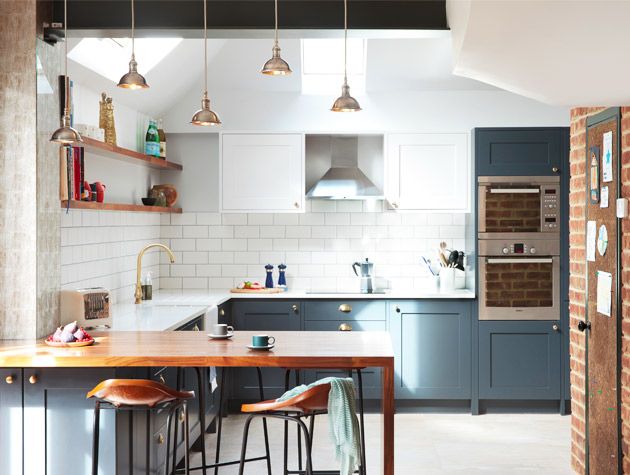
Photo: Matteo Bianchi Studio
Create a sense of cohesion
Your extension doesn’t have to be exactly the same style as your home, but there should be a sense of cohesion. This is important if you’ve created an open-plan kitchen, with a cooking and living space in one. If there are large areas of glass, the extension may be brighter than the rest of the house, so consider this when choosing materials and colours. Wood veneers and muted tones are ideal in an open-plan kitchen or one that flows from a more traditional interior.
Another way to unify the extension with the rest of your home is with flooring, lighting and paint – using the same materials or colours will ease the transition. Linking an extension with an outside area is popular and often achieved with glazed doors.
‘When planning the space, think about where the doors will be installed and the effect they will have on the view,’ suggests Peter Watkins, general manager at Centor Europe. ‘For example, bi-fold doors provide a seamless connection and unrestricted access to outside, while sliding doors may be a better choice if you expect to have them closed the majority of the time.’
A final consideration is how you are going to dress glass doors. Window treatments provide privacy, insulation and a softer aesthetic, plus they will prevent your glazing from looking like an expanse of black at night.
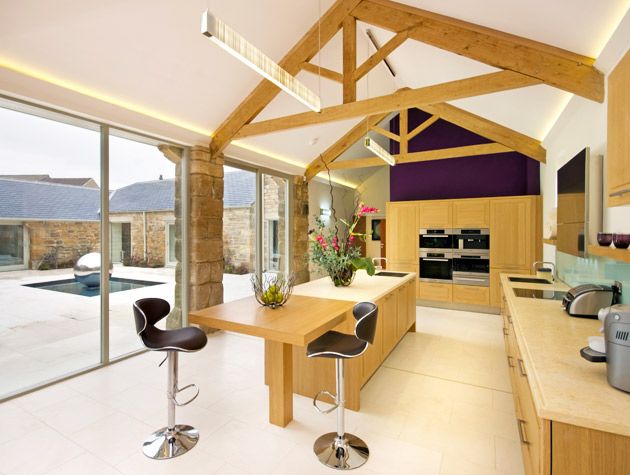
Photo: Michael Wright Kitchens and Interiors
Finishing touches
Planning a kitchen extension right down to the finishing touches will help you achieve the best finish. As your kitchen-diner will be on display, getting the details right is essential. Consider hiding power points in a cupboard with a tambour door, or adding pop-up sockets so the lines of your design remain uninterrupted. Similarly, integrated appliances and a downdraft extractor that recesses into the worktop will make the space feel less utilitarian when the kitchen isn’t in use.
The materials you choose can also help the room to work as one. ‘To create a unity of design within the space, consider a graduation in height from the kitchen, through an informal dining zone to media units in the living area in one continuous run, with a single finish for surfaces and cabinets,’ suggests Michael Wright, founder of Michael Wright Kitchens and Interiors.
Alternatively, introduce a contrasting top to differentiate individual zones. A wooden worksurface to delineate the dining area at the end of a stone or laminate peninsula has the additional advantage of being warmer, both on the eye and to the touch.’
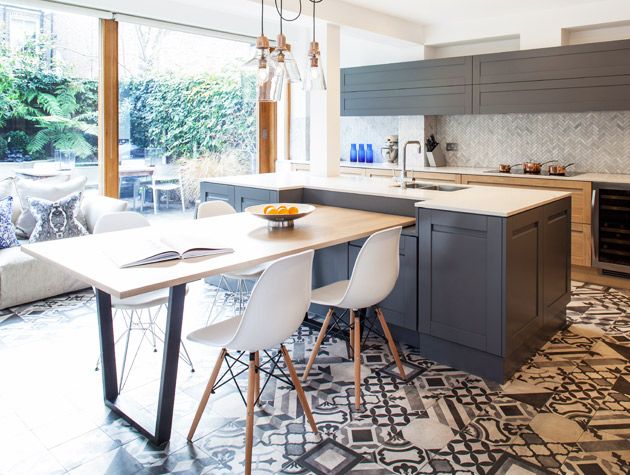
Photo: Sybaris Interiors

